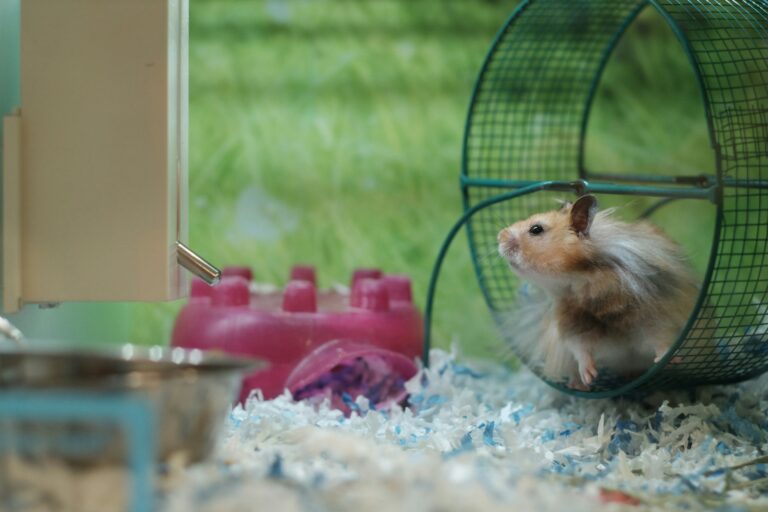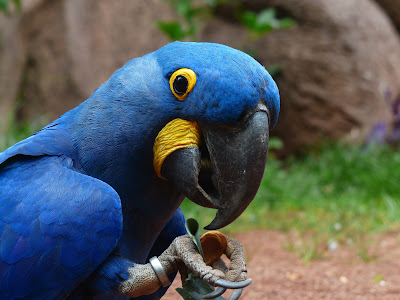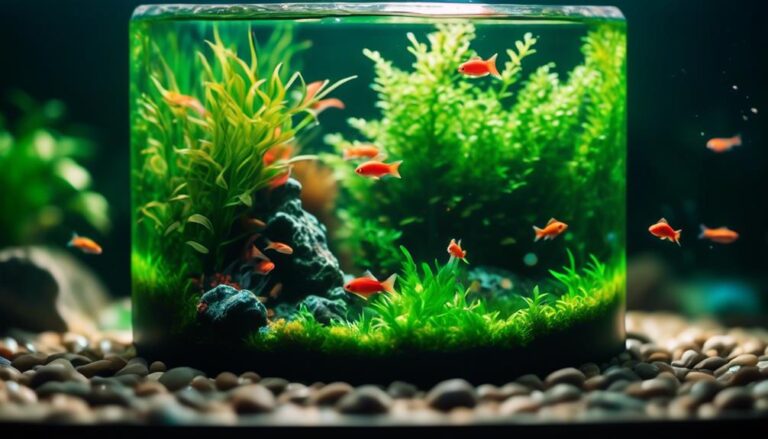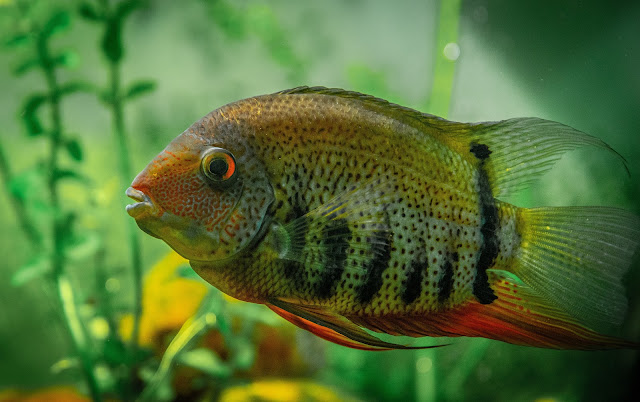Tank Tactics: Pet Fish Tank Care

Pet Fish Tank Care: Imagine stepping into a serene aquatic world, where vibrant fish glide gracefully through crystal-clear waters, and lush plants sway gently in the currents. Maintaining a thriving and harmonious fish tank requires more than just filling it with water and adding a few fish. It takes careful attention to detail and proper care to ensure the health and well-being of your aquatic pets. In this discussion, we will explore the essential tank tactics and care strategies that will help you create a thriving and beautiful fish tank. From water conditioning to choosing the right fish species, get ready to dive into the fascinating world of pet fish tank care.
Tank Size and Setup
To ensure the optimal living conditions for your pet fish, it is essential to carefully consider the tank size and setup. Choosing the right tank size is crucial for the well-being of your fish. The size of the tank should be determined by the type and number of fish you plan to keep. Different species have different space requirements, so it is important to do your research before making a decision. A larger tank will provide more swimming space and allow for a greater variety of fish.
When setting up your fish tank, it is important to consider the space required for decorations, plants, and any additional equipment. These elements not only enhance the aesthetic appeal of the tank but also provide hiding spots and resting areas for your fish. It is recommended to create a natural and stimulating environment for your pet fish by incorporating plants, rocks, and driftwood.
In addition to the size and decorations, proper tank filtration and circulation are essential for maintaining water quality and oxygen levels. A good filtration system will remove harmful substances and keep the water clean and clear. Adequate water circulation is important for distributing oxygen and nutrients throughout the tank.
To determine the ideal tank setup for your pet fish, it is important to research the specific environmental needs of the fish species you plan to keep. Different freshwater fish have different temperature, pH, and water hardness requirements. By understanding these needs, you can create an environment that closely mimics their natural habitat, promoting their health and well-being.
Consulting with pet counselors or experienced fish keepers can provide valuable advice on the best tank size and setup for your pet fish. They can offer guidance based on their experience and help you make informed decisions.
Water Quality and Parameters
To ensure a healthy environment for your fish and plants, it is crucial to regularly test the water parameters. Keep an eye on the pH levels, ammonia levels, and nitrate levels. By monitoring and maintaining these parameters within the appropriate range, you can promote the well-being of your aquatic pets and prevent any potential issues that may arise from imbalanced water chemistry.
Ph Levels
Monitoring pH levels is crucial for maintaining the water quality in your pet fish tank to ensure the optimal health and well-being of your aquatic inhabitants. The pH level of the water refers to its acidity or alkalinity and can significantly impact the health of your fish and other aquatic life. It is essential to use a pH test kit to regularly monitor the pH levels in your aquarium. Freshwater fish thrive in pH levels between 6.6 and 6.8, while saltwater fish prefer pH levels between 7.6 and 8.4. By keeping the pH within the appropriate range, you can create a stable and healthy environment for your fish.
If the pH levels are too high or too low, it can cause stress and even lead to illness or death. It is important to consult with pet counselors for advice on maintaining pH balance and other chemical levels in your tank. Regularly checking nitrate, nitrite, and ammonia levels is also crucial for the overall water quality. Before introducing new fish into your tank, always test the water chemistry and adjust the acclimation process accordingly. By following these guidelines and maintaining a healthy ecosystem through proper water conditioning, you can ensure the well-being of your pet fish.
Ammonia Levels
Regularly monitoring ammonia levels in your fish tank is vital for maintaining the health and well-being of your aquatic inhabitants. Ammonia, a toxic substance produced by fish waste and decaying organic matter, can be harmful if not kept in check. Testing for ammonia is essential to ensure that levels are within a safe range for your fish. Ideally, ammonia levels should be at zero, as any detectable levels can be detrimental. High ammonia levels can be a sign of overfeeding, overstocking, or inadequate filtration. To address ammonia levels, it is important to regularly perform water changes and ensure proper filtration. By maintaining safe ammonia levels, you can create a healthy and thriving environment for your pet fish.
Nitrate Levels
Keeping nitrate levels in check is crucial for maintaining a healthy and thriving environment for your pet fish and aquatic plants. Nitrate levels in a freshwater aquarium should be regularly tested and maintained below 40 ppm to prevent stress and health issues for your fish. High nitrate levels can lead to poor water quality, algae growth, and fish health problems.
To control and stabilize nitrate concentrations, it is important to conduct regular water changes. This will help remove excess nitrates and maintain a balanced ecosystem. If you are unsure about how to manage and reduce nitrate levels in your aquarium, it is always a good idea to consult with pet counselors who can provide expert advice on tank maintenance and water quality for optimal fish care.
Importance of Cycling the Tank
To properly care for your pet fish, it is crucial to understand the importance of cycling the tank. Cycling the tank is the process of establishing a healthy environment for your fish by promoting the growth of beneficial microorganisms that break down waste. This not only ensures the well-being of your fish but also helps maintain water quality and prevent the accumulation of harmful substances.
Cycling Basics Explained
Cycling the tank is an essential step in establishing a healthy and thriving environment for your pet fish. During the cycling process, microorganisms break down waste, creating a balanced ecosystem in the tank. To kick off the cycling process, you can use a cycling packet or fish food, but never cycle the tank with fish already in it.
It’s important to let the tank run for at least a week before adding fish, allowing time for the beneficial bacteria to establish. Regular water testing is crucial in freshwater maintenance to ensure the tank’s parameters are safe for your fish. By monitoring ammonia, nitrite, and nitrate levels, you can make necessary adjustments to maintain a healthy environment for your finned friends.
Benefits of Tank Cycling
Establishing a balanced ecosystem and promoting fish health, tank cycling is a crucial step in creating a thriving environment for your pet fish. By kickstarting the growth of beneficial bacteria, tank cycling helps break down waste and toxins in the tank, ensuring a clean and healthy habitat for your fish.
Cycling the tank for at least a week before adding fish allows the environment to stabilize, preventing harmful water conditions that can be detrimental to fish species. You can initiate the cycling process effectively by using a cycling packet or fish food, which provides the necessary nutrients for the bacteria to thrive. Remember, never introduce fish into an uncycled tank. Taking the time to properly cycle your tank will greatly benefit your pet fish and contribute to their overall well-being.
How to Cycle Effectively
As you dive into the process of creating a thriving environment for your pet fish, understanding how to cycle your tank effectively becomes paramount. Cycling the tank is crucial for establishing a healthy ecosystem for your fish. During the cycling process, microorganisms break down waste, creating a balanced environment. To cycle effectively, allow the tank to run for at least a week before adding fish.
You can kick off the cycling process by using a cycling packet or fish food, but never cycle the tank with fish already in it. Regular water testing and monitoring are essential to ensure that the tank has completed the cycling process and the water parameters are suitable for fish. Proper tank maintenance, including regular water changes and cleaning, is also necessary to maintain a healthy and stable environment for your fish.
Choosing the Right Fish
When choosing the right fish for your pet tank, it is crucial to research specific species to understand their size, temperament, and space requirements. This step is essential to ensure the well-being of your fish and the overall health of your tank. Each fish species has different needs and characteristics that must be taken into consideration.
Size is an important factor to consider when choosing fish for your tank. Some species may grow larger than others and will require more space to swim and thrive. It is important to provide enough space for each fish to prevent overcrowding, which can lead to stress, disease, and even death. Additionally, different fish species have different temperaments. Some may be more aggressive and territorial, while others are peaceful and social. It is important to choose fish that will coexist peacefully in your tank to avoid conflicts and ensure a harmonious environment.
Compatibility is another important aspect to consider when selecting fish for your tank. Certain fish species may not get along well with others due to differences in behavior or dietary needs. It is important to research the compatibility of different fish species to avoid any aggression or stress among the fish in your tank.
To ensure the health and well-being of your fish, it is crucial to provide the appropriate tank size. Consult with pet counselors or experts to determine the right tank size based on the needs of the fish you wish to keep. A properly sized tank will provide ample swimming space and allow for proper oxygen levels, which is essential for the health of your fish.
Feeding and Nutrition
To ensure the health and well-being of your fish, it is crucial to provide them with proper feeding and nutrition. A balanced diet is essential for their overall vitality. Feeding your fish a variety of high-quality fish food will help meet their nutritional needs. Different fish species have specific dietary requirements, so it is important to research and understand the specific needs of your fish.
One of the key aspects of feeding your fish is to avoid overfeeding. Overfeeding can lead to waste buildup, algae growth, and decreased water quality. It is recommended to feed your fish small amounts of food multiple times a day, rather than one large feeding. This will prevent excess food from sinking to the bottom of the tank and causing water quality issues.
In addition to proper feeding, maintaining clean water is also vital for your fish’s health. Regular water changes are necessary to remove accumulated waste and toxins. This helps maintain optimal pH levels and ensures a healthy environment for your fish.
Biological filtration is another important factor in maintaining clean water. Beneficial bacteria in the filter help break down waste and toxins, keeping the water clean and safe for your fish. It is important to properly maintain your filter to ensure its effectiveness.
Monitoring your fish’s behavior is crucial in determining if you are feeding them the right amount. If they are constantly begging for food, it may be an indication that they are not getting enough. On the other hand, if they are not showing interest in food or are becoming lethargic, it may mean they are being overfed.
Cleaning and Maintenance
Regular cleaning and maintenance of your pet fish tank is essential to ensure a healthy and thriving aquatic environment. To keep your tank in optimal condition, there are several key tasks you should perform regularly.
Firstly, schedule regular water changes to maintain a healthy tank environment and stabilize nitrate concentrations. This will help remove any accumulated waste and toxins, ensuring that your fish have clean and oxygenated water. Aim to change around 25% of the water every two weeks, but adjust the frequency and amount according to the specific needs of your tank.
Next, it is important to clean and maintain the tank glass and structures to prevent excessive algae buildup. Algae can not only make your tank look unsightly, but it can also compete with your fish and plants for resources. Use an algae scraper or a soft sponge to gently remove algae from the glass, rocks, and decorations. Avoid using any harsh chemicals or cleaners that can harm your fish.
Before introducing new fish to your tank, always test the water chemistry to ensure a safe and suitable environment for them. Use a water test kit to measure parameters such as ammonia, nitrites, nitrates, and pH levels. This will help you identify any imbalances or potential issues in the water that could harm your fish. Adjust the pH levels using a pH test kit, as maintaining appropriate levels is crucial for the well-being of your fish and aquatic plants.
Lastly, regularly monitor and maintain water quality by using water testing kits. These kits will help you prevent the buildup of unhealthy chemicals and ensure that the water parameters are within the acceptable range for your fish. By regularly testing and maintaining water quality, you can provide a clean and healthy environment for your pet fish.
Managing Algae Growth
To effectively manage algae growth in your pet fish tank, it is crucial to implement recommended methods and regularly clean the tank glass and structures to prevent excessive algae buildup. Algae growth is a common issue in aquariums, and if left unchecked, it can harm the overall health of your fish and disrupt the balance of your tank ecosystem. By taking proactive measures, you can keep your tank clean and maintain a healthy environment for your aquatic pets.
One important step in managing algae growth is to control the amount of light exposure in your tank. Algae thrive on light, so it is essential to strike a balance between providing enough light for your fish and plants and limiting excessive light that promotes algae growth. You can achieve this by using a timer to regulate the amount of light your tank receives each day. Most aquarium experts recommend providing your tank with about 8-10 hours of light per day.
In addition to controlling light exposure, you can also consider using algae-eating fish or adding aquatic plants to naturally combat algae growth. Certain species, such as Siamese algae eaters or otocinclus catfish, are known to be effective in controlling algae. These fish consume algae as part of their diet, helping to keep your tank clean. Aquatic plants also absorb nutrients that algae need to grow, reducing their growth rate.
Regularly testing and maintaining the quality of your aquarium water is another crucial aspect of managing algae growth. Conducting regular tests to monitor the levels of nitrates, phosphates, and other nutrients can help you identify and address any imbalances that may be contributing to excessive algae growth. By keeping your water clean and properly balanced, you can create a healthy environment that is less conducive to algae growth.
Dealing With Common Fish Diseases
Managing algae growth is essential for maintaining a healthy pet fish tank. Now, let’s delve into the important topic of dealing with common fish diseases. Recognizing common fish diseases such as ich, fin rot, and dropsy is crucial in order to provide timely treatment and prevent the further spread of illness. One of the key factors in preventing common fish diseases is maintaining a clean and well-balanced aquarium environment. Regular water changes, using a water test kit to monitor water parameters, and keeping the tank clean can greatly contribute to the overall health of your fish.
Quarantining new fish before introducing them to the main tank is another important step in preventing the spread of diseases. New fish can potentially carry parasites or infections that can harm the existing fish population. By isolating them in a separate tank for a period of time, you can closely monitor their health and ensure they are disease-free before introducing them to the main tank.
It is also essential to research and consult with experts to learn about treatment options and preventive measures for common fish diseases. Different diseases require different treatments, and it is important to administer the correct treatment in a timely manner. Additionally, monitoring fish behavior and appearance regularly can help catch early signs of illness. Changes in appetite, swimming patterns, or the appearance of spots, lesions, or abnormal growths should be addressed promptly.
Lastly, overfeeding fish can lead to a buildup of waste and poor water quality, making them more susceptible to diseases. It is important to feed your fish the appropriate amount of food and remove any uneaten food from the tank to maintain a healthy and clean environment.
Aquarium Lighting and Timers
To ensure optimal plant growth and fish health in your pet fish tank, it is crucial to utilize appropriate aquarium lighting and timers. Proper lighting is essential for the well-being of your aquarium fish and live plants. It not only provides the necessary light for photosynthesis but also helps establish a consistent day-night cycle, which is important for the overall health of the tank.
When setting up your aquarium lighting, it is recommended to use a timer. This will help you maintain a consistent lighting schedule and prevent excessive exposure to light. By setting the timer, you can ensure that your aquarium fish and live plants receive an appropriate amount of light each day. Adjust the duration of lighting based on the specific needs of your fish and plants.
One important aspect to consider when it comes to aquarium lighting is controlling light intensity. It is crucial to prevent excessive light intensity as it can cause stress to your fish. Regularly check the lighting intensity and adjust it accordingly to create a comfortable environment for your aquarium fish.
Another factor to keep in mind is preventing algae growth. Excessive light exposure can promote the growth of algae in your tank. By using a timer, you can limit the amount of light your aquarium receives, reducing the chances of algae overgrowth. Additionally, regularly clean your tank and use a water conditioner to maintain clean and filtered water, which will further help in preventing algae growth.
Adding Decorations and Plants
When it comes to creating a thriving and visually appealing pet fish tank, one important aspect to consider is adding decorations and plants that both enhance the aesthetics of the tank and provide a safe and stimulating environment for your fish. Choosing decorations and plants that are safe for fish and won’t harm them is crucial. Before adding them to the tank, make sure to thoroughly clean the decorations and plants to remove any harmful substances. This can be done by rinsing them with water and using a mild soap if necessary.
Providing a variety of plants and decorations in your tank is essential for creating hiding spots and territories for your fish. This helps mimic their natural habitat and gives them a sense of security. When selecting plants, consider the space available and the compatibility with the fish species in your tank. Some fish prefer more open spaces, while others thrive in densely planted areas.
Regular maintenance and cleaning of decorations and plants are necessary to prevent the buildup of harmful substances and maintain a healthy tank environment. Use a gravel vacuum to clean the substrate and remove any debris. An algae scraper can be used to clean algae off the decorations and tank walls. Additionally, regularly feeding your fish with high-quality fish food will promote their overall health and well-being.
Troubleshooting and Problem-solving
To effectively troubleshoot and solve problems in your pet fish tank, it is essential to be proactive and attentive to your tank’s water quality and fish health. One of the key aspects of maintaining a healthy tank is to regularly test the water for ammonia, nitrate, nitrite, and pH levels. By identifying and addressing any water quality issues promptly, you can ensure a safe environment for your fish.
Another important factor to consider is the proper acclimation of new fish. When introducing them to the tank, it is crucial to minimize shock and ensure their well-being. This can be done by slowly adjusting the temperature and pH of the water in the bag or container that the fish came in. By gradually introducing them to the tank water, you can help them adjust more easily.
If you encounter any problems or have questions regarding your tank’s water chemistry or fish health, don’t hesitate to consult with pet counselors. They can provide valuable advice and guidance on troubleshooting and solving various issues.
Maintaining a consistent feeding schedule and avoiding overfeeding is also vital in keeping your tank clean and the water safe for fish. Overfeeding can lead to waste buildup, which can negatively impact water quality. By feeding your fish the appropriate amount and removing any uneaten food, you can prevent potential problems.
Lastly, implementing a regular tank maintenance schedule is crucial. This includes performing water changes, checking equipment, and testing the water regularly. By staying on top of these tasks, you can prevent potential issues and ensure a clean and healthy environment for your fish.
Pet Fish Tank Care Frequently Asked Questions
What Maintenance Does a Fish Tank Need?
To properly maintain your fish tank, ensure proper filtration by cleaning or replacing the filter regularly. Regularly test the water to monitor pH levels and chemical concentrations. Maintain the water temperature within the recommended range. Clean tank accessories regularly to prevent algae growth.
How Do You Take Care of a Fish Tank for Beginners?
To take care of a fish tank for beginners, start by setting up the tank properly and choosing the right fish. Follow a feeding schedule and regularly test water quality. Be prepared to deal with common fish tank problems.
How Do You Take Care of a Pet Fish?
To take care of a pet fish, establish a feeding schedule, choose the right tank size, manage water quality, select beginner-friendly fish, and set up a proper tank environment. These steps ensure your fish’s well-being.
How Do I Keep My Fish Tank Clean Without Changing Water?
To keep your fish tank clean without changing water, utilize natural filtration methods like live plants and beneficial bacteria. Regularly test the water quality, feed your fish appropriately, and consider maintenance-free tank options for easier upkeep.
Conclusion
In conclusion, maintaining a healthy and thriving fish tank requires attention to detail and proper care. By following the guidelines and tips provided in Tank Tactics: Pet Fish Tank Care, you can create an optimal environment for your pet fish. From choosing the right tank size to monitoring water quality and ensuring proper feeding, every aspect of fish tank care is important. By staying informed and proactive, you can enjoy the beauty and companionship of your pet fish for years to come.








